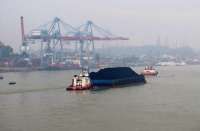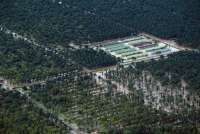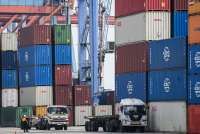JAKARTA. Non-performing loans (NPLs) are still haunting the banking performance. The increase in NPL ratio of commercial credit has become the concern of banking sector.
The data of KONTAN showed that at least three out of a number of banks, which have published data related to NPL, have exceeded the safe limit of NPL at the level of 5%. The three banks include Bank Mandiri, BTN, CIMB Niaga and Bank Rakyat Indonesia (BRI).
As of September 2016, the NPL ratio of BTN’s commercial credit has reached 13.16%. Although high, the figure has slightly drop compared with the last year that reached the level of 13.24%. Meanwhile, Bank Mandiri recorded a surge in NPLs of commercial credit from 2.54% by the end of September 2015 to 6.34% by the end of September 2016.
Management of BTN revealed that he high ratio of NPL in commercial credit was mainly derived from construction loans, both for residential and non-residential segment.
Finance Director of BRI Haru Koesmahargyo stated that the NPL of BRI in the commercial sector was mainly derived from the debtors at the segments of trade and manufacture. The NPL of debtors from the middle-level sector were caused more by the effect of sluggish economic condition, Haru said.
As of September 2016, the NPL ratio of BRI’s commercial credit stood at around the level of 6.52%, or lower compared with the last year’s position, which stood at the level of 7.26%.
Meanwhile, BNI recorded a 3.30% NPL ratio during the period. The number actually remains lower than the safe limit. However, according to the Director of BNI Putrama Wahju Setiawan, the bank keeps monitoring the sources of the bank’s NPL in commercial credit, including the sectors of manufacture and industries, which related to commodities and mining. Putrama said that the manufacture sector includes plastic processing industry.
Corporate Director of Bank Permata Anita Siswadi added that NPLs of commercial credits were also derived from the steel industry, which is recently affected by the imports of cheap iron ores from China. “In terms of palm oil (commodity), most of NPLs were derived from the upstream sides as the negative impact of La Nina storm,” Anita said.
Anita predicted that the debtors’s ability to settle the debts will improve, thanks to the increases in the prices of coal and palm.
Corporate Secretary of BRI Hari Siaga said that BRI is now more selective in choosing the consumers. Furthermore, the bank will immediately restructure the NPLs.
Meanwhile, Oni said that BTN prefers to select projects with better prospective and experienced developers in order to control the NPL in commercial credit.
(Muhammad Farid/Translator)
/2016/11/07/5345136p.jpg)









